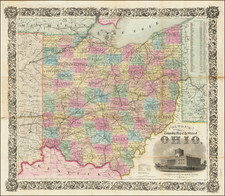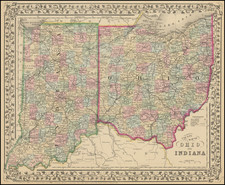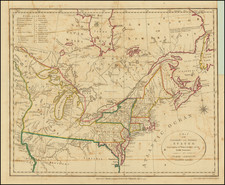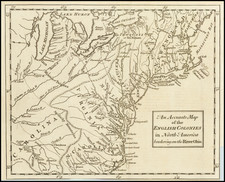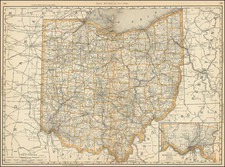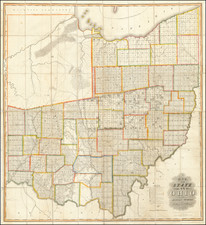Ohio Town Plan / The Separatist Society of Zoar
Detailed cadastral town plats, setting forth the plan of the town of Valley City, Ohio, drawn for the Trustees of the Separatist Society of Zoar.
Plat of the Town of Valley City . . . 1882
The first plat, dated 1882, notes that it was "Laid out by the Seperatist Society of Zoar, October 9, 1882, near the Junction of the Marietta and Valley Railroad with the Wheeling & Lake Erie Railroad, in Sandy and Fairfield townships, Tuscarawas County, Ohio. Jacob Ackerman, J.G. Ruoff, Samuel Harr, Trustees. Surveyed and Platted by O.H. Hoover, County Surveyor."
Plat of the Second Addition of Valley City. . . 1887
The second plat, dated 1887, notes that it was "Laid out by the Seperatist Society of Zoar, May A.D. 1887," and is signed by Jacob Ackerman, Simon Beiter and John Sturm, Trustees, Separatist Society of Zoar.. Surveyed and Platted by Oliver H. Hoover, Surveyor."
The Separatist Society of Zoar
Zoar was founded by German religious dissenters called the Society of Separatists of Zoar in 1817, named after the Biblical village to which Lot and his family escaped from Sodom. It was a communal society: all property was communally owned, and the farms, shops, and factories were managed by regularly elected trustees. The society attained its greatest prosperity in the 1850s, when it owned over 10,000 acres of land.
The Separatists, or Zoarites, emigrated from the kingdom of Württemberg in southwestern Germany due to religious oppression from the Lutheran church. Leading among their group were some natives of Rottenacker on the Danube. Having separated from the established church, their theology was based in part on the writings of Jakob Böhme. They did not practice baptism or confirmation and did not celebrate religious holidays except for the Sabbath. A central flower garden in Zoar was based on the Book of Revelation with a towering tree in the middle representing Christ and other elements surrounding it representing other allegorical elements.
The leader of the society was named Joseph Bimeler (also known as Joseph Bäumler or Bäumeler), a pipemaker as well as teacher from Ulm, who led the society until his death in 1853.
An early event critical to the success of the colony was the digging of the Ohio and Erie Canal. The Zoarites had purchased 5,000 acres of land sight unseen and used loans to pay for it. The loans were to be paid off by 1830. The Society struggled for many years to determine what products and services they could produce in their village to pay off the loans. The state of Ohio required some of the Zoarite land to be used as a right of way and offered the Zoarites an opportunity to assist in digging the canals for money. The state gave them a choice of digging it themselves for pay or having the state pay others to dig the canal. The Zoarites then spent several years in the 1820s digging the canal and thus were able to pay off their loans on time with much money to spare.
Bimeler's death on August 31, 1853 led to a slow decline in the cohesion of the village. By 1898, the village voted to disband the communal society and the property was divided among the remaining residents.











